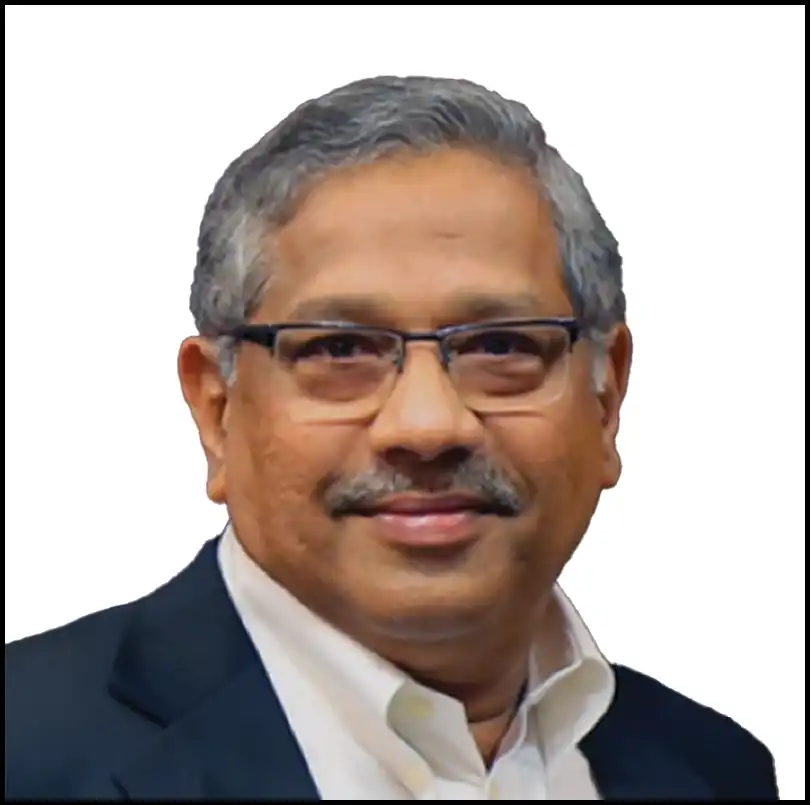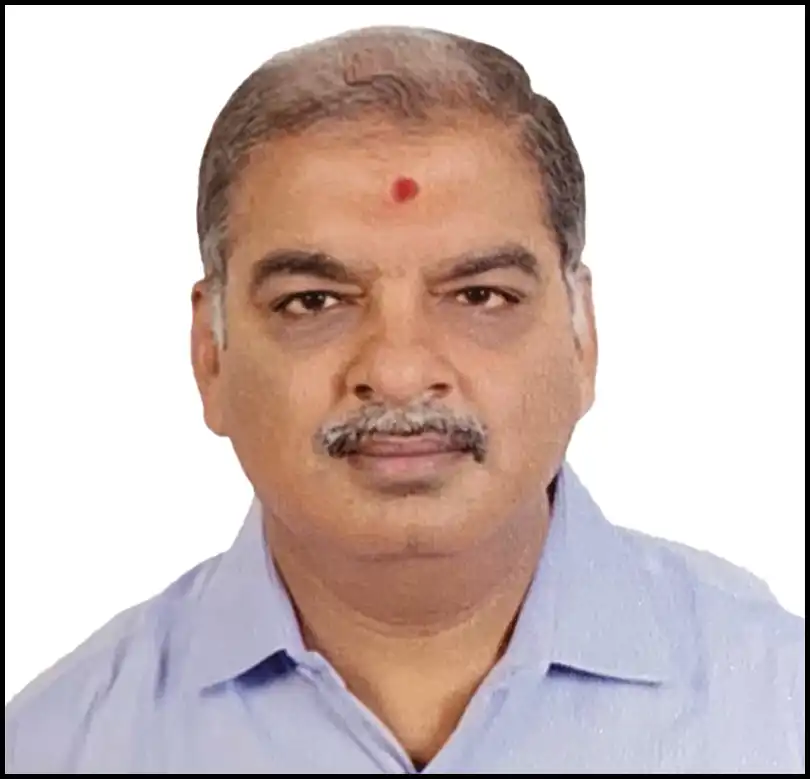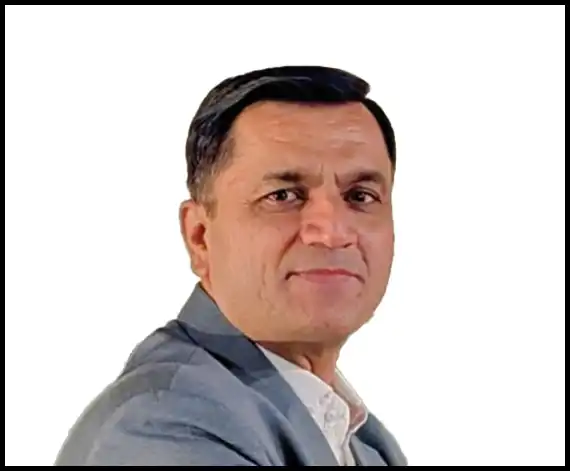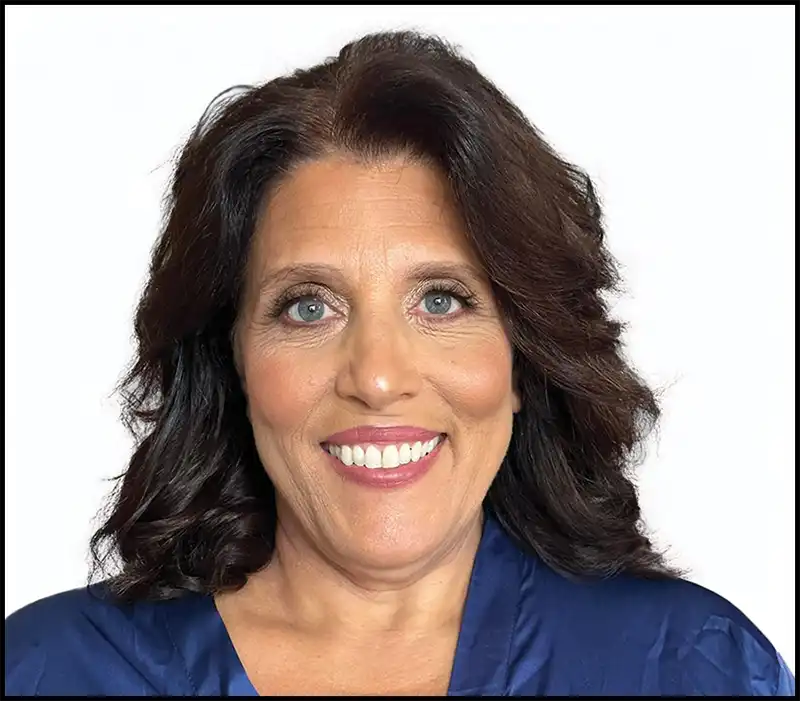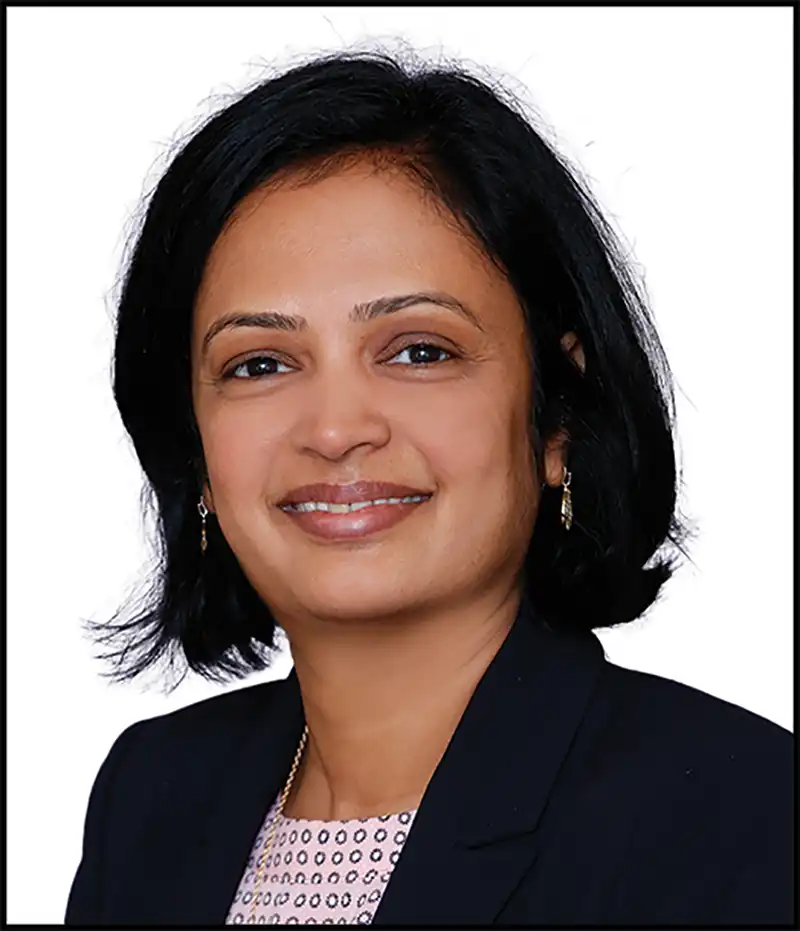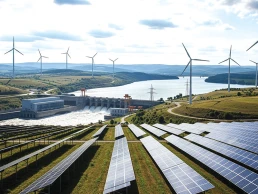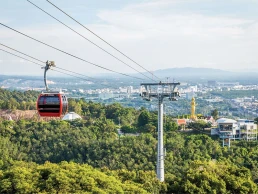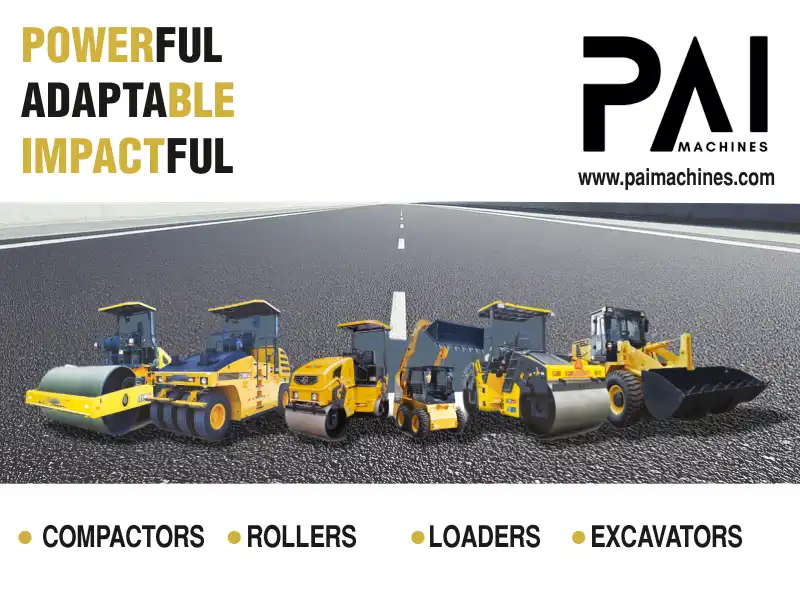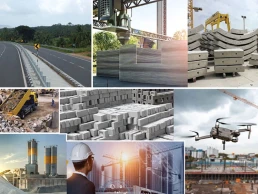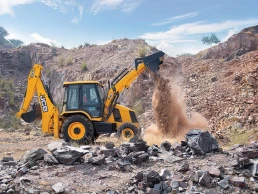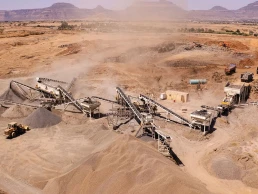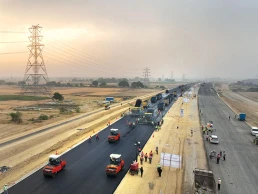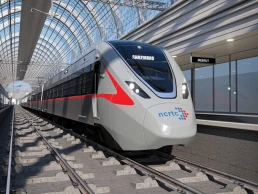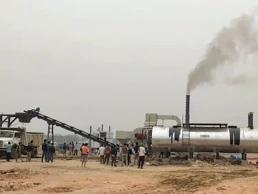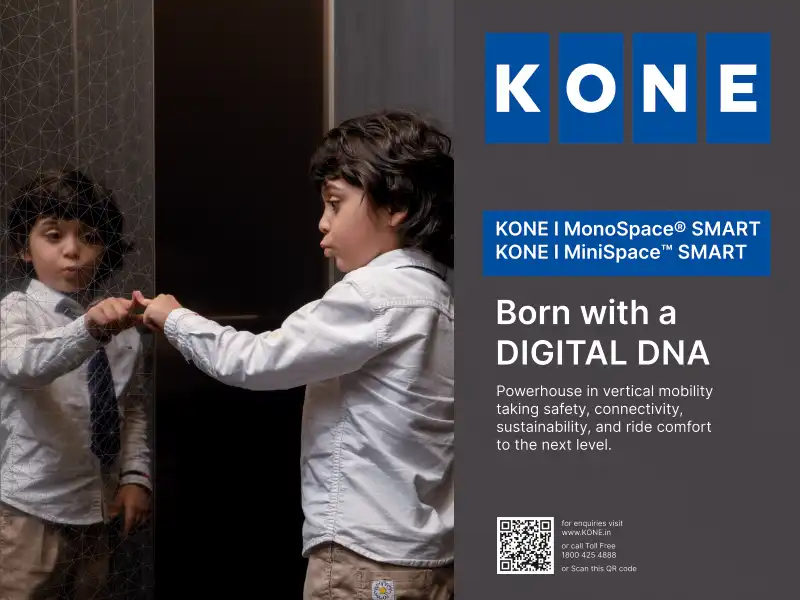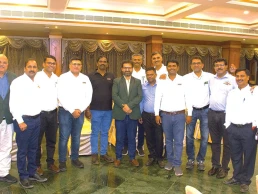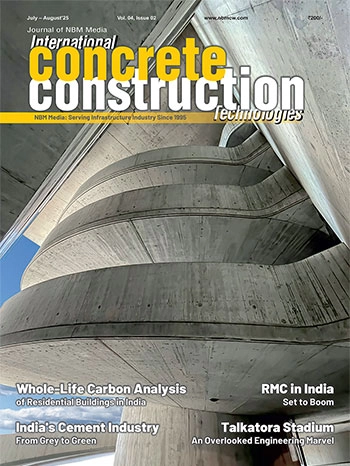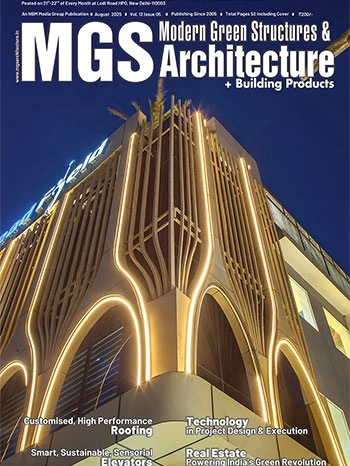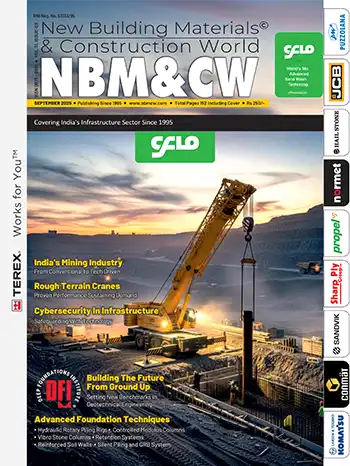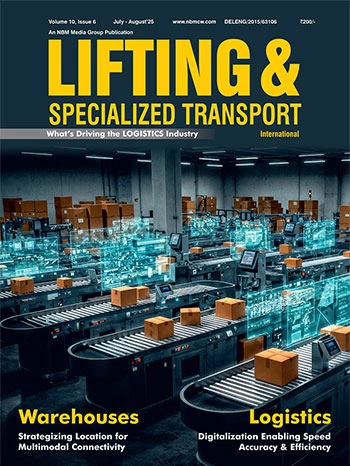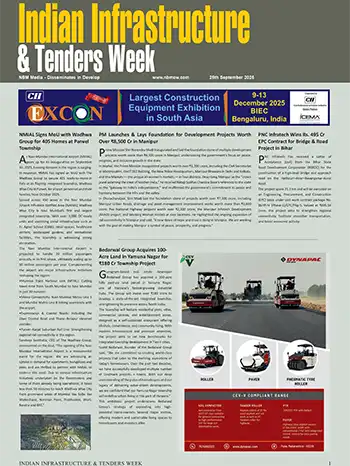Building the Future from the Ground Up
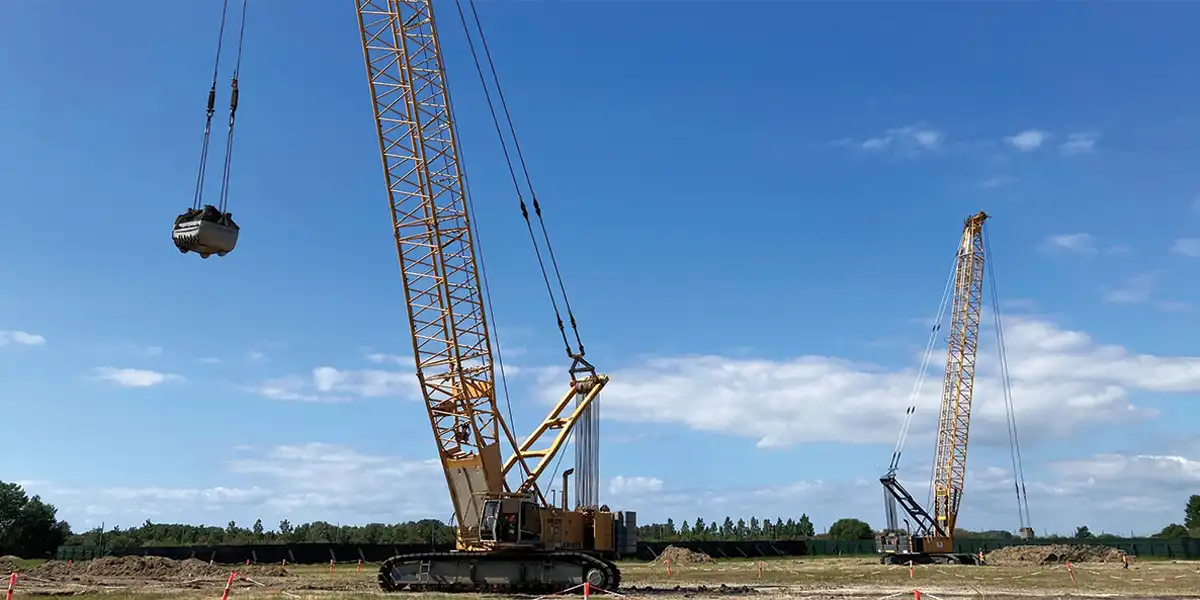
As DFI-India prepares for its 14th Annual Conference, leading voices in the geotechnical and foundation sector share their vision for innovation, collaboration, and the future of deep foundation engineering. From advanced equipment and AI-driven construction to skill development and global–local technology exchange, these experts outline a clear roadmap for the industry. The conference will cover topics ranging from cutting-edge design and testing methods to sustainable practices and inclusivity in the sector.
Insights by Mohan Ramanathan, Chair, DFI of India; Dr. Sunil Basarkar, Vice-Chair, DFI of India; Prof. Chandresh Solanki, Chair, DFI-India 2025 Conference; Dr. Jaykumar Shukla, Technical Chair, DFI-India 2025 Conference; Theresa Engler, Executive Director, DFI; and Lucky Nagarajan, Support Committee Chair, DFI of India.
“India’s unique conditions serve as catalysts for local innovation and adaptation of established techniques from the West.”
Mohan Ramanathan
Chair, DFI of India
How do you describe the current landscape of the foundation industry in India? How it compares to that of developed western countries?
Mohan Ramanathan: The foundation industry in India has undergone rapid transformation over the past decade, marked by an impressive increase in both the scale and complexity of infrastructure projects. We're witnessing greater adoption of advanced technologies, higher safety norms, and an active shift toward mechanization—a trend that was once seen predominantly in developed Western nations. Major metros, expressways, ports, and industrial corridors have become testbeds for deploying state-of-the-art foundation equipment and techniques such as rotary piling rigs, diaphragm walls, and soil improvement solutions.
However, the landscape remains diverse. While Tier 1 urban projects often match international practices, there is still considerable variation in standards and execution quality across the broader country. Challenges remain around adequate geotechnical investigations, consistent skill development, deployment of modern equipment at smaller sites, and rigorous enforcement of safety protocols. In comparison, developed countries benefit from stricter regulatory frameworks, thorough quality control, and a mature ecosystem of skilled professionals and specialized contractors.
India’s unique conditions—ranging from rapidly urbanizing cities to vast stretches of varying soil and climatic conditions—bring their own set of technical challenges. But these very challenges serve as catalysts for local innovation and adaptation of established techniques from the West. While we are steadily bridging the gap with developed regions, ongoing emphasis on technology transfer, skilled manpower development, and collaborative R&D will be critical for the Indian foundation industry to consistently meet and even set global benchmarks.
What are your key goals for the DFI-India 2025 Conference, and how do you envision it contributing to the growth and evolution of the Indian deep foundation industry?
Mohan Ramanathan: Our core goal for the DFI-India 2025 Conference is to provide a vibrant platform for knowledge exchange, where practitioners, academics, and industry leaders can engage deeply on the latest breakthroughs in deep foundation technologies. We intend to showcase innovations relevant both to India’s unique geotechnical challenges and to the latest global trends—be it in foundation equipment, design methodologies, sustainability in construction, or digitalization.
A key focus this year is to deliberate on the modern state-of-the-art foundation equipment from around the world to encourage active dialogue between stakeholders, including engineers, contractors, developers, and policymakers. This synergy is essential for building a resilient ecosystem that can efficiently address India’s ambitious infrastructure agenda. We are prioritizing sessions on innovations, AI, lessons learned from major projects, and emerging challenges such as climate-resilient foundations and smart monitoring.
By fostering interaction between Indian and international experts, the conference will help accelerate the adoption of best practices and facilitate technology transfer tailored to Indian conditions. We also hope to inspire greater research, standardization, and skill development—ultimately paving the way for higher quality, cost-effective, and sustainable foundation solutions nationwide. The DFI-India 2025 Conference, therefore, aims not just to share knowledge, but to catalyze a sustained movement toward engineering excellence in India’s deep foundation industry.
“Conventional engineering will be rapidly replaced by new approaches and highly efficient equipment."
Dr. Sunil Basarkar
Vice-Chair, DFI of India
What major technological or methodological shifts do you foresee shaping the deep foundation sector in India over the next decade?
Sunil Basarkar: Well, according to CRISIL, Indian infrastructure projections between 2024 to 2030 are slated to be Rs. 143 lakh crores, which is more than twice the investment spent in the past seven fiscal years starting 2017. EPC players have geared up to address this growth through investments in technology, new processes and equipment. India is prioritizing the road & railway transportation, energy and urban infra segments and heavy influx of process and equipment technology is foreseen in tunnelling, ground improvement and pile foundations.
The foundation industry has already initiated to address this challenge with the continuous flight auger (CFA) and helical piling, rigid inclusions form of ground improvement introduced in India during past couple of years. These technologies will not only accelerate the foundation constructions but will also allow infrastructure expansion in the softer coastal regions hitherto unknown in the past.
Heavy duty tunnel boring machines (TBM) have already overcome the hard rock boring of Mumbai metros; and now, with 12.2m diameter TBM deployed successfully at Mumbai Coastal Road project and another gigantic 13.1m and 15.6m TBMs planned for high-speed rail project & Versova-Dahisar Link Road (VDLR) projects, India is eyeing high using a ‘cutting edge’ TBM technologies to its advantage. Trench-cutters used for diaphragm walls at Chennai metro now allow deep excavation support systems even in hard weathered rock.
I have illustrated these sectors of infrastructure to highlight the challenges already embraced. Deep Foundations Institute of India is all geared up promote, train and disseminate these technologies for India’s growth.
How do you think this year’s conference will help address the most pressing technical and execution challenges faced by practitioners today?
Sunil Basarkar: As I conveyed, upcoming projects will no-longer rely on conventional thinking and execution techniques. They will require technologies to overcome mammoth geometries, strength with a speed not fathomed earlier.
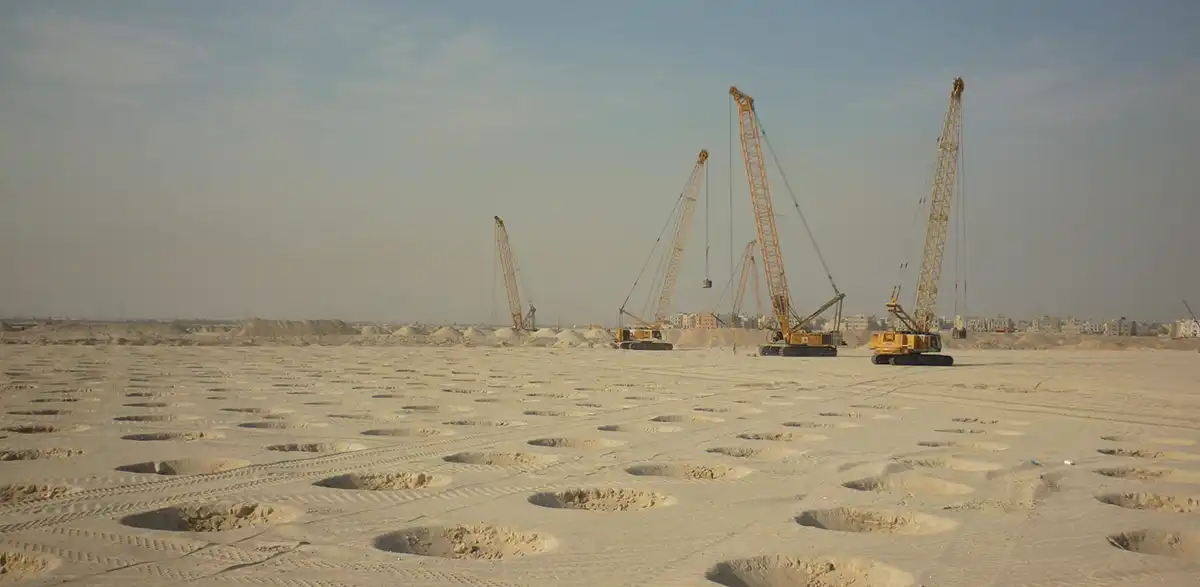
In this version of DFI conference, we intend to address this affinity with a Half-day Special Session devoted specifically to latest developments in deep foundation construction, testing equipment, their state of art practices. The themes include silent piling & sheet pile driving, large diameter piling including the reverse circulation drilling (RCD), trench cutter technology, innovations in monitoring, testing, and subsurface exploration, driven pile equipment, automation & robotics – knowing well that the future of foundation equipment lies in AI-driven automation and robotics. Speakers and field experts involved with these technologies are invited in this session to share their experiences through case studies and applications. This session and the group interactions that will follow, is expected to be very enriching, since the stakeholders will be the decision makers in the India construction industry.
Keynote addresses have been carefully selected to include the new technology theme. These presentations will share new areas and applications of innovative engineering and how they can be useful in India. You see, conventional engineering will be rapidly replaced by new approaches and highly efficient equipment. Themes like Innovative Techniques in Deep Foundation and Deep Excavation Design and Construction, Foundation Monitoring and Performance Evaluation; Geotechnical Data Management, Automation, AI, ML, Deep Marine, Near-shore and Coastal Structures are included– these are intended to look beyond and address unexplored zones of foundation applications.
DFI of India have instituted a special committee this year to address sustainability in deep foundations. This year we elevate our efforts to greater heights with novel steps to reduce the carbon footprints due to foundation execution. A dedicated theme also addresses Cost-Effective and Sustainable Practices in Deep Foundations & Smart Foundations including Reuse of Existing Foundations. With accumulation of wealth of knowledge on the sustainability practices, we intend to come up with a sustainability guideline for foundation industry in immediate future.
“Our vision is to catalyse deeper collaboration, create actionable knowledge, and set new quality benchmarks in India’s foundation engineering landscape.”
Prof. Chandresh Solanki
Chair, DFI-India 2025 Conference
What is your overarching vision for DFI-India 2025, and how does this year’s conference aim to set new benchmarks in the foundation industry?
Chandresh Solanki: As Chair of DFI-India 2025, my vision is to raise the national talk around deep foundation technologies and build a more combined link between academia, industry, and infrastructure policy. This year’s theme “Deep Foundation Technologies for Infrastructure Development in India” was chosen to capture the growing demands and multi-disciplinary challenges faced by engineers and designers in today’s complex-built environment.
DFI-India 2025 is designed not just as a conference, but as a platform for transformation. Through nine-ten well-defined technical sessions, we aim to showcase innovation, reflect on failures, and set direction for future growth. From innovative techniques in deep excavation and tall building foundations, to ground improvement strategies and coastal and marine foundation design, the conference addresses both scale and diversity. These are not just academic topics they are real engineering problems that India is dealing with today.
We also believe in a forward-looking approach. The conference includes lectures and discussions on AI, machine learning, geotechnical data management, and performance monitoring tools that will define how we model, construct, and maintain infrastructure in the next decade. Sessions on smart foundation equipment, compliance challenges, and reuse of existing foundations further support our mission to promote cost-effective and sustainable practices. Another key aspect is our focus on learning from the past. Sessions on deep foundation failures and best practices will provide precious understandings, especially for the younger generation.
This year’s conference is a convergence point for theory, practice, and innovation. Our vision is to catalyse deeper collaboration, create actionable knowledge, and set new quality benchmarks in India's foundation engineering landscape. By bringing global expertise to local relevance, we aspire to contribute significantly to the nation's infrastructure transformation journey.
From your perspective, what are the most significant changes you have observed in India’s deep foundation sector over the past decade?
Chandresh Solanki: The last decade has been pivotal for India’s deep foundation industry, marked by technological advancement, design evolution, and implementation reforms. Perhaps the most profound change is the shift from standard design approaches to performance-based and data-driven foundation design, which has become essential for projects involving tall buildings, metros, highways, ports, and coastal structures. There is now a widespread adoption of ground improvement techniques such as stone columns, geosynthetics, deep mixing, and vertical drains techniques once confined to academic discussions, but now mainstream in practice. These solutions have allowed construction on soft and problematic soils, making previously challenging sites feasible for infrastructure development. The increase in smart instrumentation and geotechnical performance monitoring has also transformed the sector. We now have the ability to track foundation behaviour in real-time, assess stress distribution, settlement trends, and respond dynamically. Joined with this is the growing role of AI and ML, helping us analyse large datasets, improve reliability, and optimize design decisions a key theme that we are proud to include in this year’s conference. In addition, research has matured Indian researchers, who are contributing globally in areas like numerical modelling of deep excavations, pile-raft interaction, and foundation behaviour under seismic loading.
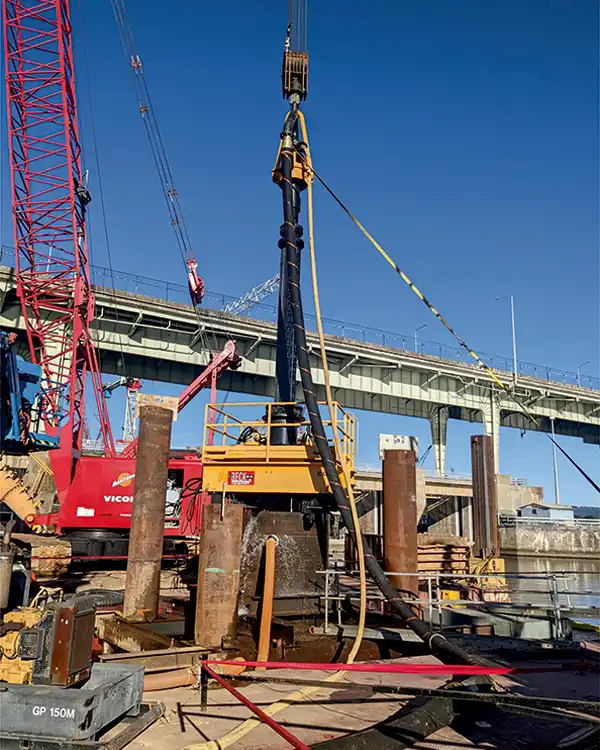
Academic-industry collaborations have strengthened, and softwares have become integral to both education and consultancy. Field practices have also seen a revolution. There is a growing use of automated piling rigs, vibration-free equipment, and sensor-based drilling and concreting systems. At the same time, compliance norms and governance structures have become more severe, ensuring safety, quality, and environmental responsibility. Finally, there is now an ecosystem that values past learnings. Lessons from foundation failures are no longer suppressed they are studied, shared, and acted upon. This culture of accountability and continuous learning is one of the most positive shifts I’ve observed, and it resonates deeply with our goals for DFI-India 2025.
“Targeted industrial support and indigenous capability development are essential to place India at the forefront of deep foundation design and construction.”
Dr. Jaykumar Shukla
DFI-India 2025 Conference Technical Chair
In your opinion, what technical competencies and areas of research will be most critical for the Indian deep foundation industry over the next 5–10 years?
Jaykumar Shukla: Over the next 5–10 years, India’s deep foundation industry is set for transformative growth, driven by advancements in modern construction machinery, innovative ground improvement methods, numerical modeling of soil–structure interaction, and data-centric site characterization. The evolution of QA/QC protocols, alongside development and adoption of updated standards—such as those for CFA (Continuous Flight Auger) piles and deep excavations—will be instrumental. Special attention to performance documentation of bored piles, especially those installed with bentonite slurry support, will elevate both quality assurance and design reliability.
Simultaneously, investment in smart instrumentation and predictive monitoring systems will enhance safety and real-time assessment of deep excavations, piled-raft foundations and other soil structure interaction problems. Research into reusable foundation systems, seismic resilience solutions, and bio-mediated ground improvement techniques will foster sustainability-driven engineering practices. Operational excellence will further be defined by the standardization of testing methods, refinement of legal frameworks on risk-sharing, and the implementation of digital twin technologies for life-cycle asset management.
However, limited local manufacturing of small and large deep foundation equipment, coupled with reliance on imported machinery, continues to inhibit indigenous innovation. Addressing this bottleneck through targeted industrial support and incentive schemes is essential and DFI is closely working on this aspect to aid Deep Foundation Industries in India.
When combined with collaborative initiatives—such as those driven by the Deep Foundations Institute India in partnership with DFI USA—and deep academic engagement, these focus areas offer India a compelling roadmap toward global leadership in deep foundation design and construction.
Could you share your vision behind designing the technical program for DFI-India 2025? What are the key technical focus areas?
Jaykumar Shukla: DFI of India envisions a globally connected deep foundation industry that actively contributes to achieving sustainability goals and elevating productivity, safety, and quality benchmarks. By welcoming geotechnical and foundation engineering stakeholders—both domestic and international—the Institute fosters a culture of collaboration and technical exchange rooted in research, innovation, and shared best practices.
As India accelerates toward next-generation infrastructure, DFI India remains steadfast in its commitment to pioneering excellence in deep foundation engineering. This year’s conference introduces a dedicated session on Modern Construction Machinery, spotlighting transformative equipment—from automated piling rigs to sensor-integrated systems—that enhances safety, precision, and sustainability in executing complex geotechnical tasks.
The 2025 edition will host presentations across 10+ technical themes, offering a dynamic platform for professionals and researchers to share field experience and cutting-edge research. Complementing these technical discussions are keynote sessions on Deep Excavations, Ground Improvement, Geotechnical Instrumentation & Monitoring, Observational Methods for Underground Structures, and Silent Piling Techniques. Together, these reflect DFI India’s holistic approach—where field-tested practices meet academic rigor, sustainability imperatives, and digital integration.
With active support from DFI USA, academic partners, and leading equipment manufacturers, DFI India is spearheading indigenous capability development, performance-based engineering, and the widespread adoption of updated standards. Through strategic partnerships, knowledge-sharing forums, and industry-academia convergence, DFI India envisions a future where India establishes global benchmarks in safe, resilient, and efficient deep foundation practices.
The DFI India core team is working tirelessly to introduce transformative technologies that align with the national vision of a developed, self-reliant India—anchored in innovation and professional excellence.
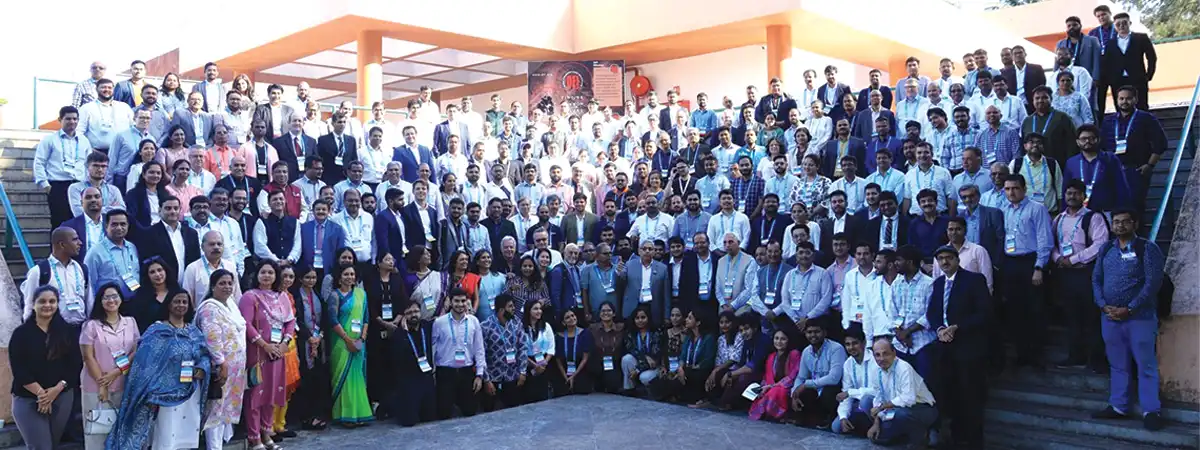
“Global interactions amplify knowledge exchange and create new opportunities for collaboration and business development.”
Theresa Engler
Executive Director, DFI
What value do you believe DFI of India brings to the global DFI network and its members?
Theresa Engler: DFI of India was established as a regional extension of the Deep Foundations Institute to provide technical guidance, promote knowledge-sharing, and foster a collaborative community among industry professionals. With the rapid growth of infrastructure projects across India, there was a clear need to deliver DFI’s resources and benefits locally; helping improve quality, safety, and innovation in geotechnical works.
Our ongoing mission is to offer meaningful educational experiences that empower members and other professionals to design and build critical infrastructure. This includes introducing new technologies, sharing best practices on risk mitigation and safe working conditions, and promoting time-saving methodologies.
The DFI of India chapter not only strengthens the domestic foundation construction community but also connects Indian professionals with peers around the world. These global interactions amplify knowledge exchange, one of DFI’s core values, and create new opportunities for collaboration and business development. Educational programs are delivered through conferences, seminars, webinars, training courses, and workshops.
In addition, our ‘Groundwork’ student outreach program enhances academic learning with real-world case studies, competitions, and research awards. This initiative helps cultivate the next generation of geotechnical experts ready to contribute to DFI member firms worldwide.
What role do conferences, workshops, and technical committees play in sustaining long-term knowledge transfer in the industry?
Theresa Engler: DFI of India’s annual conference serves as a vital forum for producing reference papers that enrich the global body of geotechnical knowledge. We are proud that these proceedings are published by Springer Nature, significantly extending the reach of these high-quality technical articles beyond DFI’s member community.
The chapter also maintains active communication through its quarterly newsletter, which highlights project case studies, important industry developments, and technical insights. In addition, DFI of India regularly contributes to Deep Foundations, DFI’s bi-monthly magazine, which reaches over 4,000 members and more than 25,000 industry professionals worldwide through digital access.
DFI of India’s technical committees continue to drive innovation and capacity-building across the sector. The Continuous Flight Auger (CFA) Pile Committee has successfully introduced CFA technology and is now collaborating with the Bureau of Indian Standards to develop CFA-specific piling codes. Efforts are also underway to raise awareness about the potential of helical pile systems in India.
Other active committees include:
- Geotechnical Characterization for Foundations, which provides training in soil investigation and laboratory testing—enhancing best practices among lab technicians.
- Sustainability Committee, our newest initiative, which works in tandem with DFI’s global sustainability efforts and the European Federation of Foundation Contractors to promote the UN Sustainable Development Goals within the Indian context.
DFI of India has also formed strategic alliances with notable institutions such as Chennai Metro Rail Limited and the National Academy of Construction. These partnerships strengthen technical standards and have led to impactful skill development programs, furthering the chapter’s role in shaping the future of India’s foundation construction industry.
“You have to see it to be it—visibility and inclusion are catalysts for change in the deep foundation industry.”
Lucky Nagarajan
DFI of India Support Committee Chair
How can conferences like DFI-India 2025 and Women in Deep Foundations (WiDF) group inspire and empower young engineers - especially aspiring female engineers - to pursue rewarding careers and drive innovations in the deep foundation industry?
Lucky Nagarajan: As the saying goes, “You have to see it to be it.” When young engineers—especially women—see others who look like them leading and innovating in deep foundations, it opens doors for them to envision their own success. That has certainly been true in my own journey. I didn’t fully grasp the depth and impact of groups like Women in Deep Foundations (WiDF) until I saw them in action. These communities offer perspective, fuel aspirations, and provide the critical support needed to pursue and achieve ambitious goals.
Many leaders emphasize the importance of building a diverse network of mentors—often recommending at least seven mentors from a variety of backgrounds, disciplines, and perspectives. The reasoning is simple: no single person can offer everything. A "mentor mosaic" gives you broader insight, challenges your assumptions, and supports your growth—personally, professionally, and creatively.
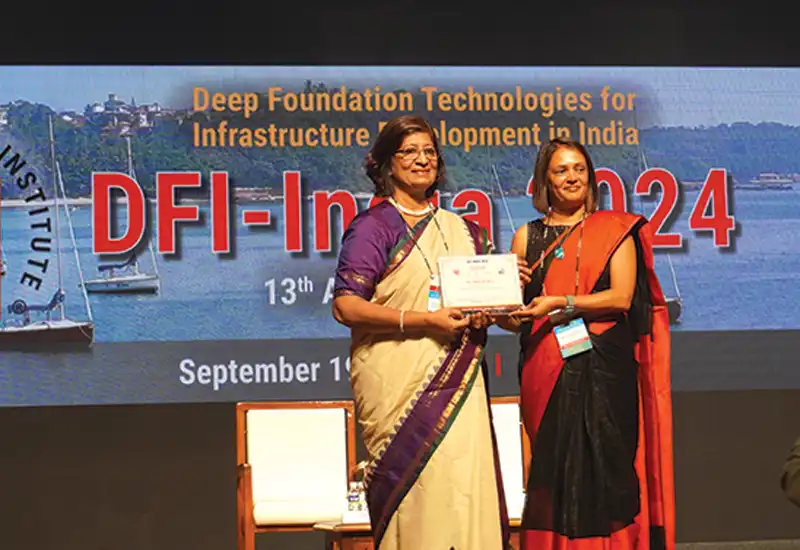
As aspiring female engineers progress through different stages of their careers, having safe, inclusive spaces to share, reflect, and receive support becomes essential—not only for individual success but for the sustained growth of our industry. As we grow in our roles, conferences and communities like DFI-India and WiDF become places where milestones are not only met but recognized and celebrated, motivating women to stay, thrive, and become the rockstars of the deep foundation world. WiDF India group has beautifully evolved into a space where sensitive conversations has brought all generations together to strengthen the community. WiDF session during the DFI India conferences has stole the spotlight and won hearts of many.
These efforts are more than initiatives—they are catalysts for change. Conferences like DFI India and groups like WiDF do more than facilitate technical learning; they actively promote inclusion, innovation, and resilience, especially for those navigating traditionally male-dominated fields. Together, they are shaping a more diverse, empowered, and future-ready geotechnical workforce—one that reflects the world we’re building.

Based on your global exposure, how does the Indian deep foundation sector compare to international markets in terms of innovation, safety standards, and adoption of new technologies?
Lucky Nagarajan: As we all know, India’s deep foundation sector is on an upward path. With growing international collaboration and exposure, India’s deep foundation sector is evolving rapidly. Growing rapidly means facing challenges with respect to innovation, safety standards and need to adopt new technologies.
Indian engineers have long demonstrated remarkable creativity under constraints, delivering technically complex foundation systems in challenging environments. Over time, sustainable and practical innovation has become the hallmark of the sector. While international markets—such as the U.S. and Europe—benefit from large, consolidated firms with internal R&D capabilities and strong global partnerships that enable faster adoption of new technologies, this process is not without its challenges even there. However, it tends to occur more swiftly due to established systems and greater funding flexibility.
In contrast, India’s infrastructure sector is largely driven by small to mid-sized firms, often with limited access to capital and technical resources. Projects are highly cost-sensitive, and newer technologies are typically adopted only when required by contract or regulation. Yet, shining examples like the Chenab Rail Bridge demonstrate that India can push the boundaries of engineering and innovation when opportunity and ambition align. From advanced design techniques and aero-dampers to drones and remote monitoring systems, the Chenab Bridge stands as a symbol of what’s possible.
Safety is another critical area where India is progressing. Globally, safe construction is non-negotiable and deeply embedded in project culture. In India, the shift is underway—especially among larger contractors and multinational clients—but standards still vary widely. Embedding safety will require sustained effort through training, policy enforcement, and a change in mindset across the industry.
Meanwhile, climate change, extreme events, and aging infrastructure are making the case for technological transformation stronger than ever. Tools like real-time monitoring, AI, and advanced testing methods are no longer luxuries—they're necessities. Yet, adoption in India remains uneven. While metro and large-scale infrastructure projects lead the way, smaller firms often struggle due to cost and skill gaps. Upskilling is occurring, but not uniformly. Unlike countries with mature ecosystems of industry-academia collaboration, India still faces delays in standardizing codes and regulatory approvals, which slows the pace of innovation.
To accelerate progress, conferences, workshops, and industry forums are critical. They create spaces for owners, designers, contractors, and innovators to come together. Initiatives within DFI India and global knowledge exchange are helping bridge these gaps—advocating for safety, fostering technical excellence, and enabling smarter adoption of innovation.
India is not aiming to replicate international models—but rather, to lead with its own brand of resilience, creativity, and efficiency.





